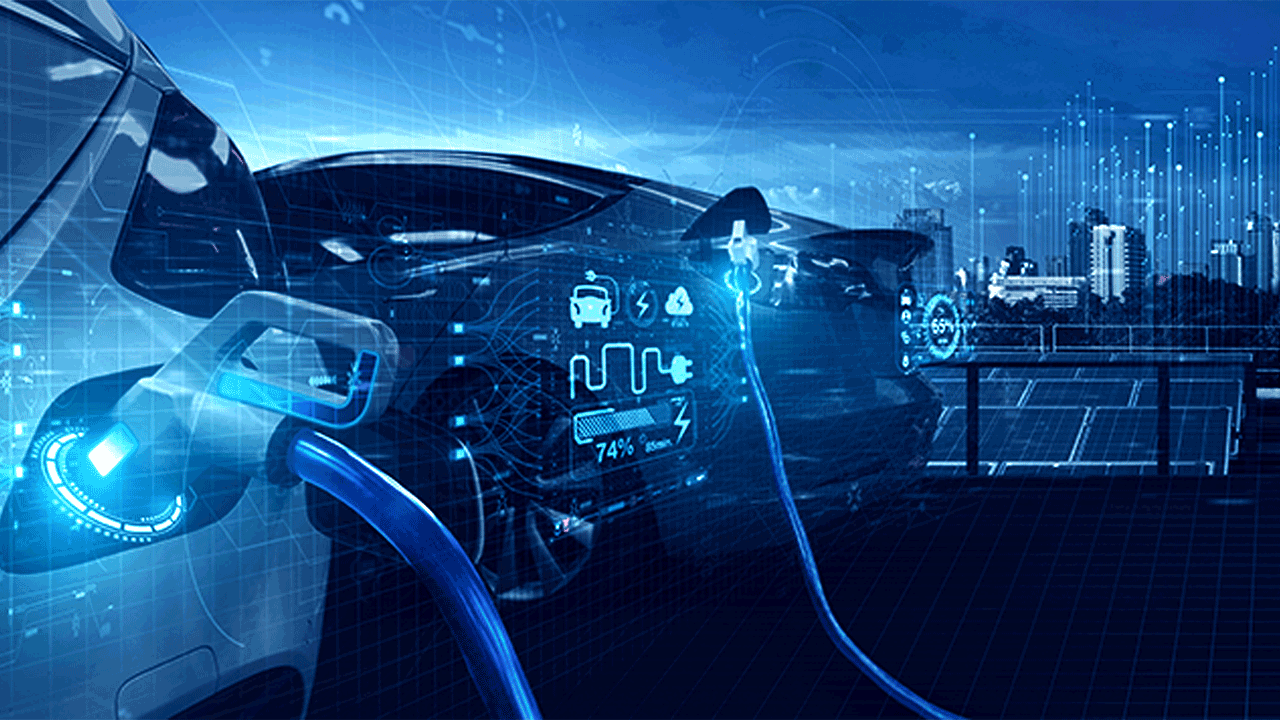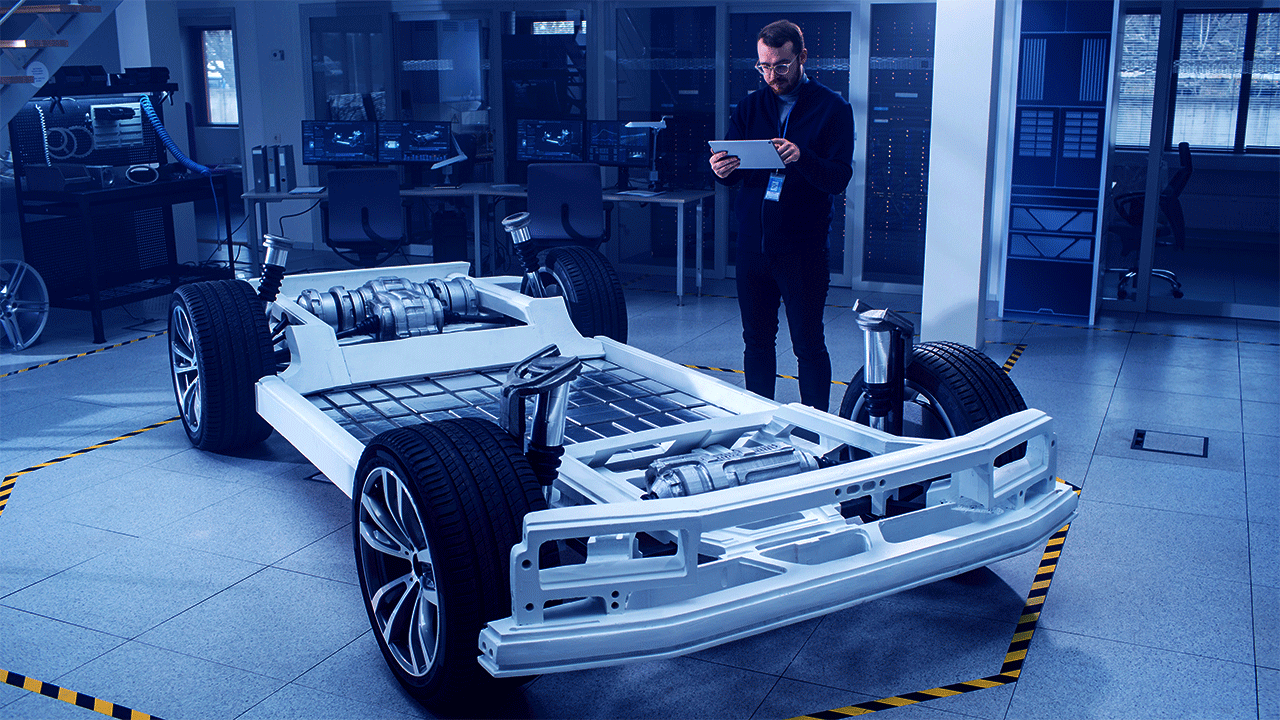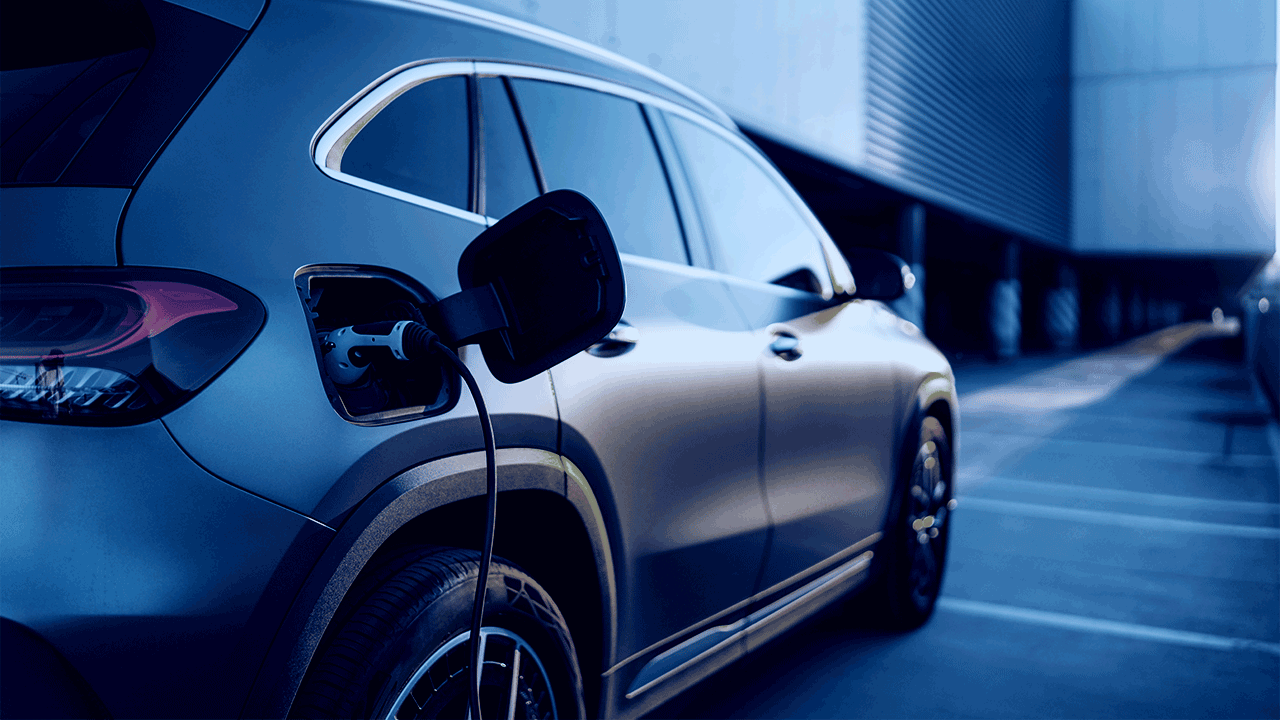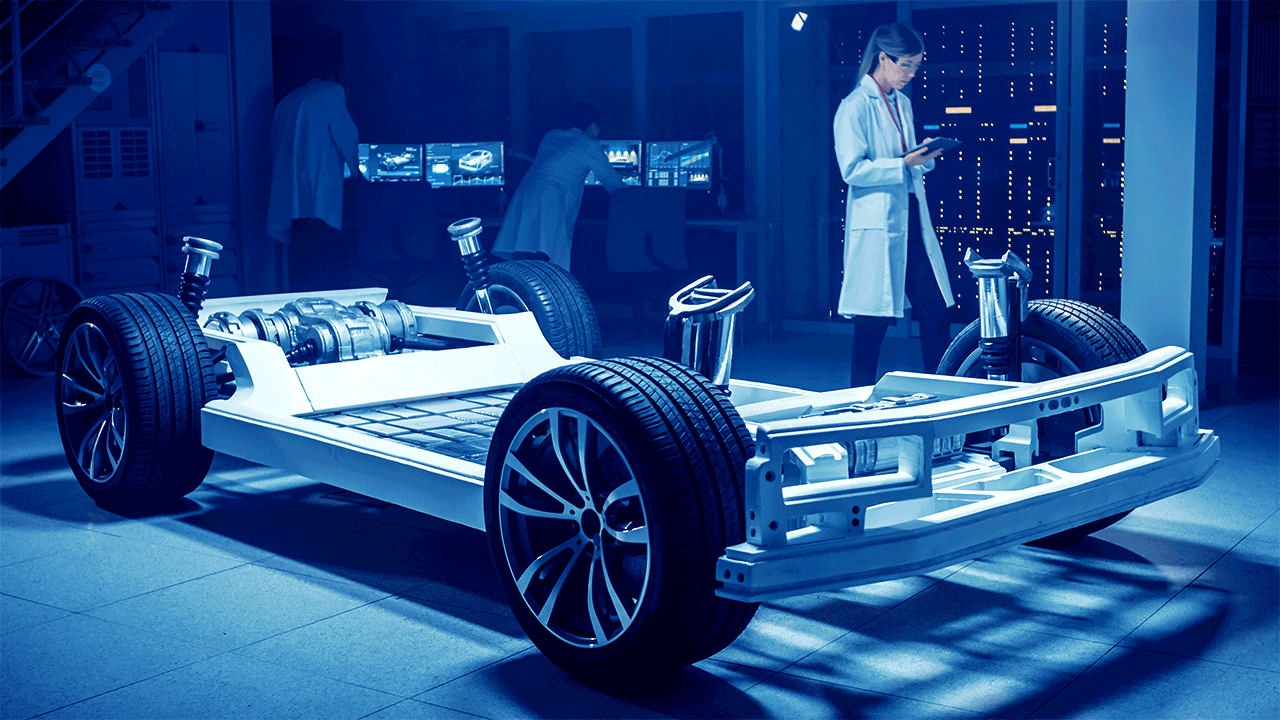Electric Vehicle Testing Equipment
Electric vehicle testing equipment and tools The rapidly increasing integration of embedded electronic control units (ECUs) in nearly every onboard...
Unlock Engineering Insights: Explore Our Technical Articles Now!
Discover a Wealth of Knowledge – Browse Our eBooks, Whitepapers, and More!
Stay Informed and Inspired – View Our Webinars and Videos Today!
Exploring the future of software-defined vehicles through expert insights.
7 min read
 Steve Neemeh
:
Nov 10, 2022 1:23:34 PM
Steve Neemeh
:
Nov 10, 2022 1:23:34 PM

The automotive industry has made several monumental advancements in vehicular technology that have redefined the understanding of modern transportation while still achieving and maintaining the functional safety aspect of creating advanced products. One active example of an opportunity the industry is currently thriving toward is electrification. The development of electric vehicle (EV) products makes testing necessary to ensure the safety and quality of their performance. In addition, that establishes the importance of Electric Vehicle Subsystems and their interactions—understanding how the implementation of these different components affects the construction of larger electrified systems will allow for the overall EV development process to be more efficient.
The growth of electrification is something that, hopefully, will further lead toward the evolution of autonomy—another great leap in automotive progress. To continue to evolve at a steady pace, it is necessary to carefully support the smaller aspects of the electric vehicle market. The way organizations and product developers can understand, test, and produce these different subsystems affect how electrification will thrive at an industry level.
Before dissecting an EV’s different subsystems and describing how they interact with each other, it is best to define what they are. Put simply these subsystems reflect the different components that make up an entire vehicle when built together. The vehicle itself can be considered a larger system, which would make components like the chassis, cabin, suspension, and battery, and motor—(or engine, in a conventional vehicle)—the vehicle subsystems. Typically, with the way products have been developed and continue to be within the EV market, there is a commonality between which subsystems make up an EV.
The combination of these different subsystems and components is what essentially makes up an EV, and how those subsystems interact with each other determines the vehicle’s operability. Some of these parts and their employed technologies interact more closely with each other, while others interact much less. Nonetheless, this cooperation between the functioning subsystems allows engineers and product developers to define requirements and test functionality. In addition, four different categories group the major subsystems in an EV.
Body design – The first group of subsystems is body design. The structural framework of the vehicle is important because it can determine the variety of possibilities in which the internal and external mechanical design houses each subsystem. Engineers monitor and configure key aspects like bumpers, suspension, chassis, and overall structural framework. The vehicular design of EVs should not be drastically changed compared to conventional vehicles, but depending on the OEM building the design of this EV, there may be slight modifications in where certain parts and components are placed.
Propulsion system – The second group describes the area of the vehicle where the electric energy is converted into kinetic in order to propel the vehicle. The propulsion subsystems often consist of the electric motor, transmission, driveline, wheels, and the motor controller (inverter), along with other electronic control units (ECUs). The newer powertrain systems developing in the EV market are integrating vehicle control units (VCUs).
Energy storage system – The next group of subsystems involve components that center around how vehicles store the energy needed for overall operability. An EV’s energy storage subsystems often consist of parts pertinent to the high-voltage batteries: battery, fuel cell, ultra-capacitor, battery management system (BMS), energy charger unit, contactors, etc. These components are integral to the EV’s functioning.
Accessory – Another group of EV subsystems are the accessory components. These components often include stereo systems, AC units, lighting, etc. These accessory subsystems in an EV require additional consideration for conservation of energy compared to a conventional vehicular architecture. Converting these components to electrified systems may reduce the EV’s overall range as more power is utilized.
With each of these different parts integrated into the larger vehicle system, it may be confusing to understand how each component interacts with the other. Again, some subsystems have little interaction with other subsystems, while several components will function cooperatively. Regardless, each part is important and can add a layer of complexity to developing these electrified products.
How do Electric Vehicle Subsystems Interact?
The different ways electric vehicle subsystems interact reflect an active, internal mechanical cooperation that allows the final electrified products to operate within their intended functionality. Engineers and product developers have to examine and configure these components, and often have a variety of ways in which they can build the EV system. Every component plays a significant role in how the overall EV system functions and performs. Looking at the vehicle design, that group of subsystems interacts with the other subsystems more directly because every part is integrated to help support how the EV operates altogether. The components within the propulsion and energy storage systems are placed to fit the vehicle’s framework.
As the development of EV system design continues, organizations may look to integrate VCUs more frequently. A VCU is notably capable of controlling accessory inputs, which include the low-voltage systems. In addition, they can be configured to control turning the vehicle on and off. There is a direct interaction with the electric motor because inverters optimize the vehicle’s torque and balance the system’s energy via motor control. The electric motor itself is often configured near the front of the vehicle’s powertrain and is what converts the electric energy needed to move the vehicle’s wheels. Motor selection may also depend on whether the powertrain is a traditional automatic, manual, or continuously variable transmission (CVT).
The electric motor interacts with the energy subsystems directly because batteries store the electric energy needed for an EV to operate. Some suggest that the battery is the heart of any EV, and the overall range depends on the battery’s capacity level. This interaction connects to the energy management unit that an organization chooses to implement into its vehicle. For instance, there has been a rise in organizations that are incorporating a BMS into their EVs. These BMSs control these high-voltage batteries and may also include EV contactors and help monitor and control that power. EV contactors are electromechanical switching devices that turn the battery on and off, allowing the BMS to help operate it through the rest of the system.
There are additional components and parts critical to EV assembly that interact with each other. There are converters, inverters, battery packs, thermal management systems, and generators involved in the intricate development of EV technology. The level of detail and complexity of each EV subsystem highlights the importance they have on the overall process of electrification. In order to design, build, a operate electrified systems, organizations must start at a module and component level.
It is evident that in order for organizations to achieve full electrification of their products, testing is required to verify that EVs are operating within their intended functionality. This factor emphasizes the importance of building and developing EV subsystems. The nature of how each module, component, subsystem, and system interact with each other is very iterative, so electric vehicle testing directly reflects that process. Electrification cannot be properly achieved without this mechatronic cooperation amongst each EV subsystem and component.
This cooperation also reflects the importance these subsystems have on the overall in-vehicle technology of modern products that OEMs are developing. From a consumer perspective, system connectivity is a key, growing consideration that impacts a buyer’s decision in purchasing a vehicle. Compared to focusing on more traditional aspects (i.e., manufacturer, body style, performance, pricing, etc.), this creates an additional value proposition for a vehicle’s features and capabilities. As the EV market grows, the continued development of complex internet-based connectivity in an EV’s infotainment subsystems should enable more sophisticated consumer usability and allow for more efficient EV subsystem interaction. In addition, the offering of connectivity and telematic services extends EV products’ continuous feedback loop by collecting performance data.

Another key aspect that reflects the importance of EV subsystems and the development of their interactions is how they will continue to affect the ever-changing EV market. The frequent reiteration of how electrification is evolving in the automotive industry is very much so necessary because its repetition emphasizes the different, smaller steps and milestones needed for that growth. For example, EV testing is becoming necessary for addressing the several complex aspects of electrification currently within the market—along with the unforeseen complexities that may arrive in the future—which highlights the active role that EV subsystems and their interactions play in the development of testing.
In addition, there are other elements within the EV market directly affected by EV subsystems and their interactions. For instance, the subsystems that apply to a vehicle’s energy storage and how they interact with each other may affect the EV charging station/infrastructure. EV charging reflects the external elements within EV testing, which can change as the industry redevelops how EV subsystems interact. From an organizational perspective, the different tier-one, tier-two, or tier-three suppliers that provide these subsystems and systems are equally important. The lingering effects of the recent global shortages may harm the organization’s ability to receive the raw materials for building and designing these subsystems.
EV standards are another actively developing aspect of the EV market that can be affected by EV subsystems and their interactions. As engineers continue to develop EVs, how critical will standards be when building these subsystems? It is assumed that some of the standards created will be government-mandated while others aren’t, which may have an organizational impact on EV-related processes depending on which organizations decide to adhere to standards or not.
It is also worth noting that the future of the EV market may create additional opportunities that will be affected by EV subsystems and their interactions. OEMs are beginning to showcase their electrified pickup trucks to demonstrate their willingness and acceptance of evolving toward different EV products. Furthermore, recent articles are identifying the steady rise of electric bikes (e-bikes) today and suggesting that they may become more desirable to consumers looking to become EV owners. The mass implementation of electrified semi-trucks is another possibility that has been discussed. Each of these transportation devices are common in the conventional, gas-fueled sense, but imagining them under the pretense of being electrified may add an extra layer of complication to the processes that develop them. Their presence in the EV market, though not very dominant compared to typical EVs, is apparent—and should continue to grow as the market grows in the next decade. The development of these EV products will always start at a component and subsystem level, reemphasizing how their mechanical interactions impact their performance once delivered in the market.
To reach these milestones in electrification, one thing is certain: there first needs to be fundamental, sufficient support systems that continuously maintain the evolution of electrified products as the industry is in its early stages. There will be small to medium-sized organizations that want to expand their electrification capabilities by testing and building their EV subsystems, which creates a high demand for EV testing centers and facilities. This market should be viewed as an exciting opportunity to expand the automotive industry, but each step in the process must be precise, collaborative, and extensive.
The path of electrification can be looked at as a deviated path from conventional vehicular technology that has been infatuated for decades. The promise of reduced environmental harm has always been one of the leading benefits of such a shift in automotive culture. Now that automotive has reached a point where sophisticated technology, intricate software, and data-driven engineering are much more optimized, the industry has started to hone such technology to advance modern transportation. Again, in order to reach such large accomplishments, the industry must start small—at a component and subsystem level. With the help of government-mandated laws and regulations, accompanied by safety-focused standards, roads around the globe can become electrified.

Electric vehicle testing equipment and tools The rapidly increasing integration of embedded electronic control units (ECUs) in nearly every onboard...

1 min read
What Are the Different Electric Vehicle Standards? Introduction Electrification is a process that has been around for decades. The history of the...

Introduction As several OEMs continue to announce the release of their new electrified vehicles, one can only presume that the world of automotive is...